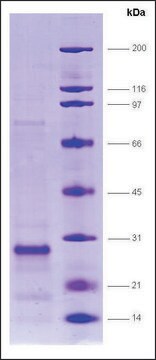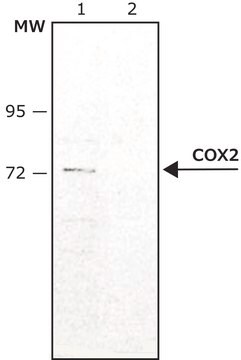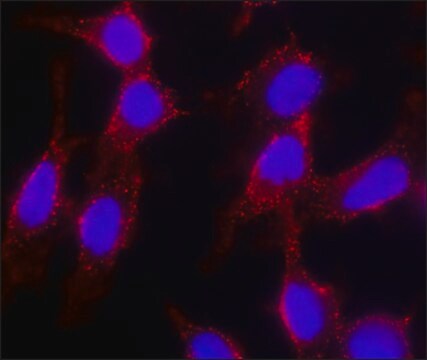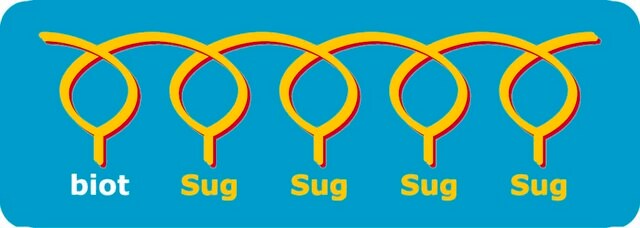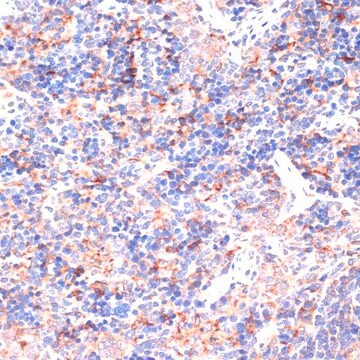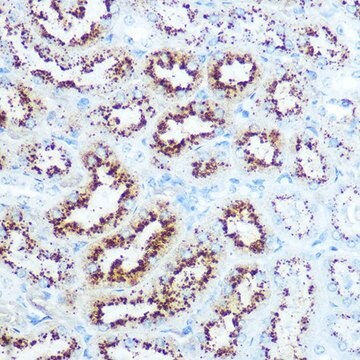Wichtige Dokumente
SAB4200774
Anti-Shiga Toxin 1, B Subunit (STxB) antibody, Mouse monoclonal
clone 13C4, purified from hybridoma cell culture
Synonym(e):
Anti-SLT-1 B subunit, Anti-SLT-1b, Anti-Shiga-like toxin 1 subunit B, Anti-Verocytotoxin 1 subunit B, Anti-Verotoxin 1 subunit B, Anti-stxB
About This Item
Empfohlene Produkte
Biologische Quelle
mouse
Qualitätsniveau
Antikörperform
purified from hybridoma cell culture
Antikörper-Produkttyp
primary antibodies
Klon
13C4, monoclonal
Beschreibung
Research area: Microbiome
Form
buffered aqueous solution
Mol-Gew.
~7 kDa
Speziesreaktivität
E. coli
Konzentration
~1.0 mg/mL
Methode(n)
flow cytometry: 2.5-5 μg/test using human RAMOS cells pretreated with recombinant Shiga toxin 1, B subunit
immunoblotting: 1-2 μg/mL using purified recombinant Shiga Toxin 1-B subunit produced in E. coli (using PVDF membrane)
immunoprecipitation (IP): suitable
Isotyp
IgG1
UniProt-Hinterlegungsnummer
Versandbedingung
dry ice
Lagertemp.
−20°C
Posttranslationale Modifikation Target
unmodified
Allgemeine Beschreibung
Spezifität
Immunogen
Anwendung
- immunoblotting
- flow cytometry
- immunoprecipitation
Biochem./physiol. Wirkung
Physikalische Form
Sonstige Hinweise
Sie haben nicht das passende Produkt gefunden?
Probieren Sie unser Produkt-Auswahlhilfe. aus.
Lagerklassenschlüssel
10 - Combustible liquids
Flammpunkt (°F)
Not applicable
Flammpunkt (°C)
Not applicable
Hier finden Sie alle aktuellen Versionen:
Analysenzertifikate (COA)
Die passende Version wird nicht angezeigt?
Wenn Sie eine bestimmte Version benötigen, können Sie anhand der Lot- oder Chargennummer nach einem spezifischen Zertifikat suchen.
Besitzen Sie dieses Produkt bereits?
In der Dokumentenbibliothek finden Sie die Dokumentation zu den Produkten, die Sie kürzlich erworben haben.
Artikel
An overview of human microbiome research, workflow challenges, sequencing, library production, data analysis, and available microbiome reagents to support your research.
Unser Team von Wissenschaftlern verfügt über Erfahrung in allen Forschungsbereichen einschließlich Life Science, Materialwissenschaften, chemischer Synthese, Chromatographie, Analytik und vielen mehr..
Setzen Sie sich mit dem technischen Dienst in Verbindung.
